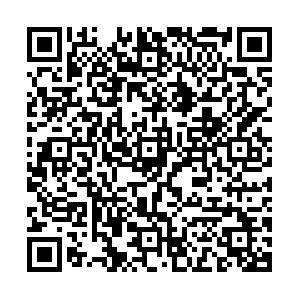教育神经科学的领域建构
-
摘要: 教育神经科学是将生物科学、认知科学、发展科学和教育科学等学科的知识与技能进行深度整合的具有独特话语体系的一门新兴学科。教育神经科学重视整体人的研究与培养, 因此将为教育奠定坚实的基础。建立研究基地、开设专业课程、对教师进行培训、形成共同的话语体系等是促进教育神经科学健康发展的重要保证。1) ① Fischer, K.W., Daniel, D.B., Immordino-Yang, M. H., Stern, E., Battro, A., & Koizumi, H.(2007).Why mind, brain, and education? Why now? Mind, Brain, and Education, 1, 1-2.2) ② 详见周加仙:《教育神经科学引论》, 华东师范大学出版社2009年版。3) ③ Chall, J.S. & Mirsky, A.F.(1978).Education and the Brain. Chicago: the University of Chicago. p.377.4) ④ Battro, A. M. Fischer, K. and Lena, P.(2008). The Educated Brain. New York: Cambridge University Press. P.169.5) ⑤ della Chiesa, B. Christoph, V., and Hinton, C.(2009) How Many Brains Does It Take to Build a New Light: Knowledge Management Challenges of a Transdisciplinary Project. Mind, brain, and Education 3, 18-26.6) ⑥ OECD (2007). Understanding the Brain: The Birth of a New Learning Science. Paris: OECD Publications. p.133.7) ⑦ OECD (2002) Understanding the Brain: Towards a New Learning Science. Paris: OECD Publications. p.84.8) ⑧ Samuels, B.M.(2009).Can the Differences Between Education and Neuroscience be Overcome by Mind, Brain, and Education? Mind, Brain, and Education 3 (1), 45-55.9) ⑨ OECD (2007). Understanding the Brain: The Birth of a New Learning Science. Paris: OECD Publications. p.133.10) ⑩ Samuels, B.M.(2009).Can the Differences Between Education and Neuroscience be Overcome by Mind, Brain, and Education? Mind, Brain, and Education 3 (1), 45-55.11) ⑪ Neville, H. J. & J. T. Bruer (2001). Language Processing: How experience Affects Brain Organization. In D. B. Bailey, J. T. Bruer, F. J. Symons & J. W. Lichtman (Eds.), Critical thinking about critical periods (pp. 151-172). Baltimore, MD: Paul H.Brookes Publishing.12) ⑫ Knusden, E. I.(2004). Sensitive Periods in the Development of Brain and Behavior. Journal of Cognitive Neuroscience, 16 (8), 1412-1425.13) ⑬ Fischer K. W. (2009). Mind, Brain, and Education: Building a Scientific Groundwork for Learning and Teaching. Mind, Brain, and Education, 3, 3-16.Hinton, C., & Fischer, K. W. (2008). Research schools: Grounding research in educational practice. Mind, Brain, and Education, 2, 157-160.14) ⑭ 周加仙:《学习科学专业课程的设置与人才培养》, 《全球教育展望》 2008年第4期。15) ⑮ Fischer K. W. (2009). Mind, Brain, and Education: Building a Scientific Groundwork for Learning and Teaching. Mind, Brain, and Education, 3, 3-16.Hinton, C., & Fischer, K. W. (2008). Research schools: Grounding research in educational practice. Mind, Brain, and Education, 2, 157-160.16) ⑯ Coch, D. and Ansari, D. (2009). Thinking about Mechanisms is Crucialto Connecting Neuroscience and Education.Cortex.45, 546-547.17) ⑰ 周加仙:《 “神经神话”的成因分析》, 《华东师范大学学报(教科版)》 2008年第3期18) ⑱ della Chiesa, B. Christoph, V., and Hinton, C.(2009) How Many Brains Does It Take to Build a New Light: Knowledge Management Challenges of a Transdisciplinary Project. Mind, brain, and Education 3, 18-26.19) ⑲ 心理学中有关学习的三个定义引自桑新民, 《学习究竟是什么?多学科视野中的学习研究论纲》, 《开放教育研究》2005年第1期。20) ⑳ della Chiesa, B. Christoph, V., and Hinton, C.(2009) How Many Brains Does It Take to Build a New Light: Knowledge Management Challenges of a Transdisciplinary Project. Mind, brain, and Education 3, 18-26.21) ㉑ 施良方:《学习论》, 人民教育出版社1994年版, 第5页。
-

 点击查看大图
点击查看大图
计量
- 文章访问数: 147
- HTML全文浏览量: 243
- PDF下载量: 9
- 被引次数: 0




 下载:
下载: